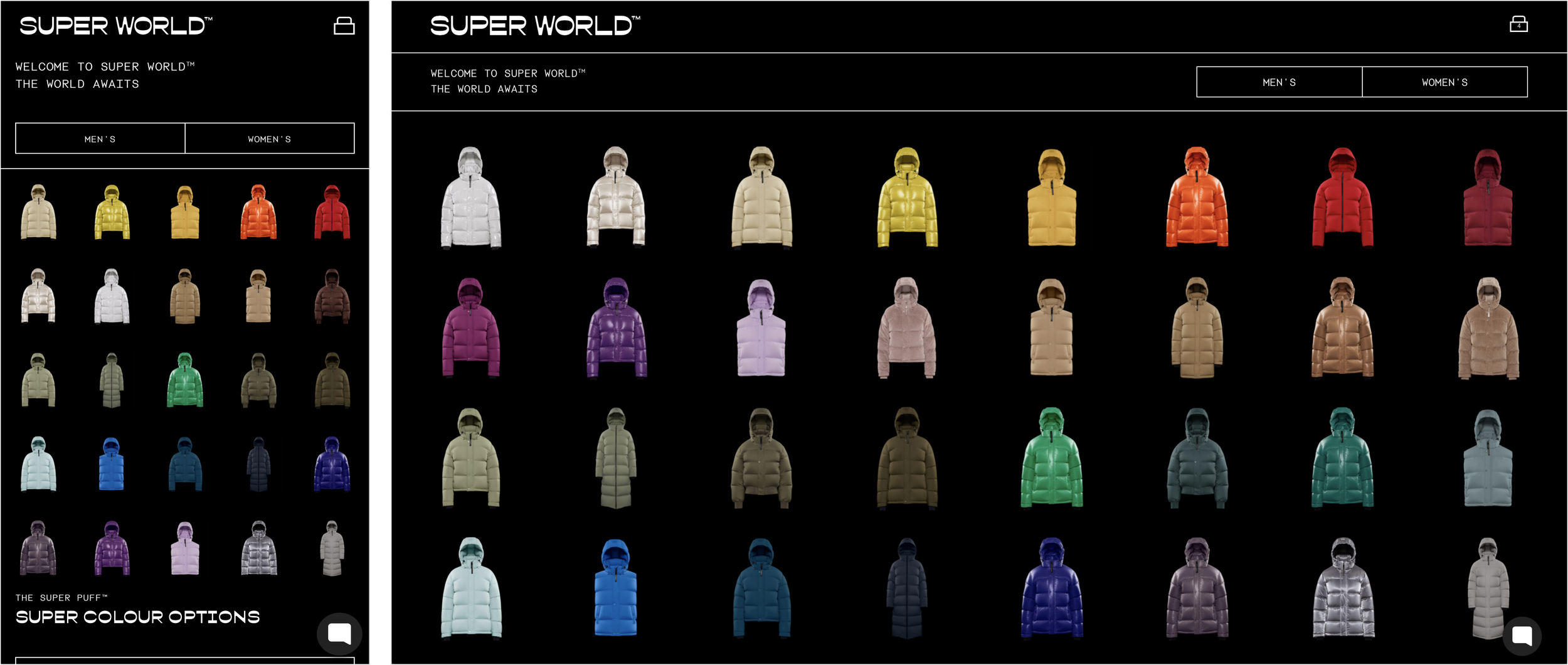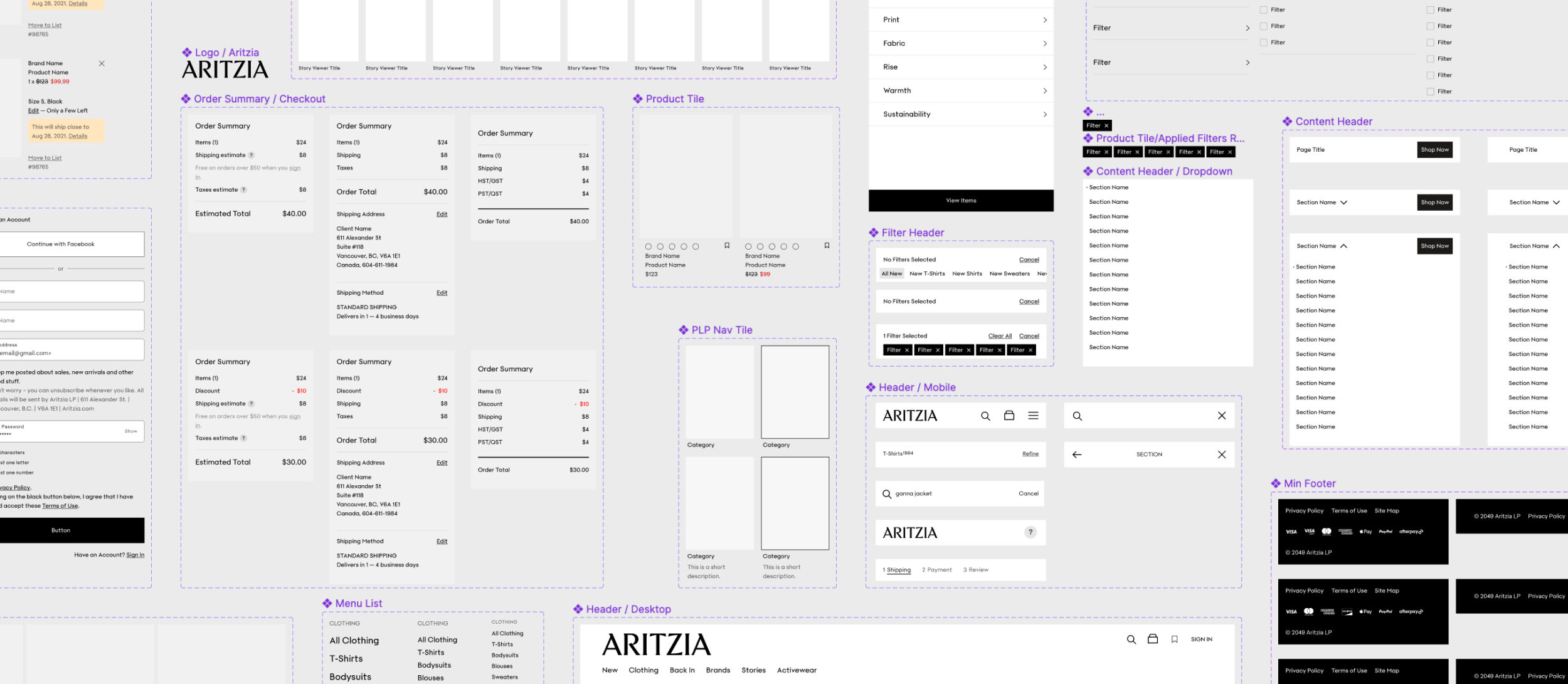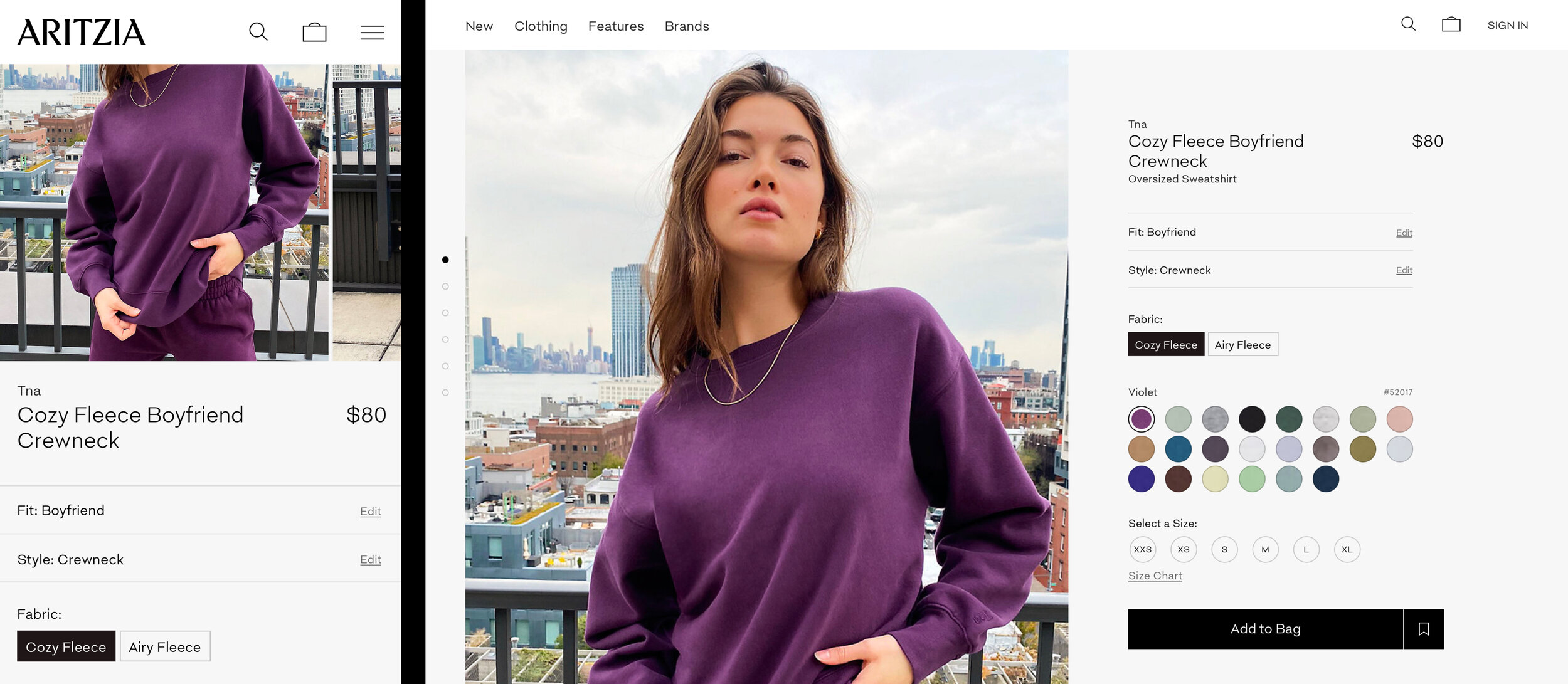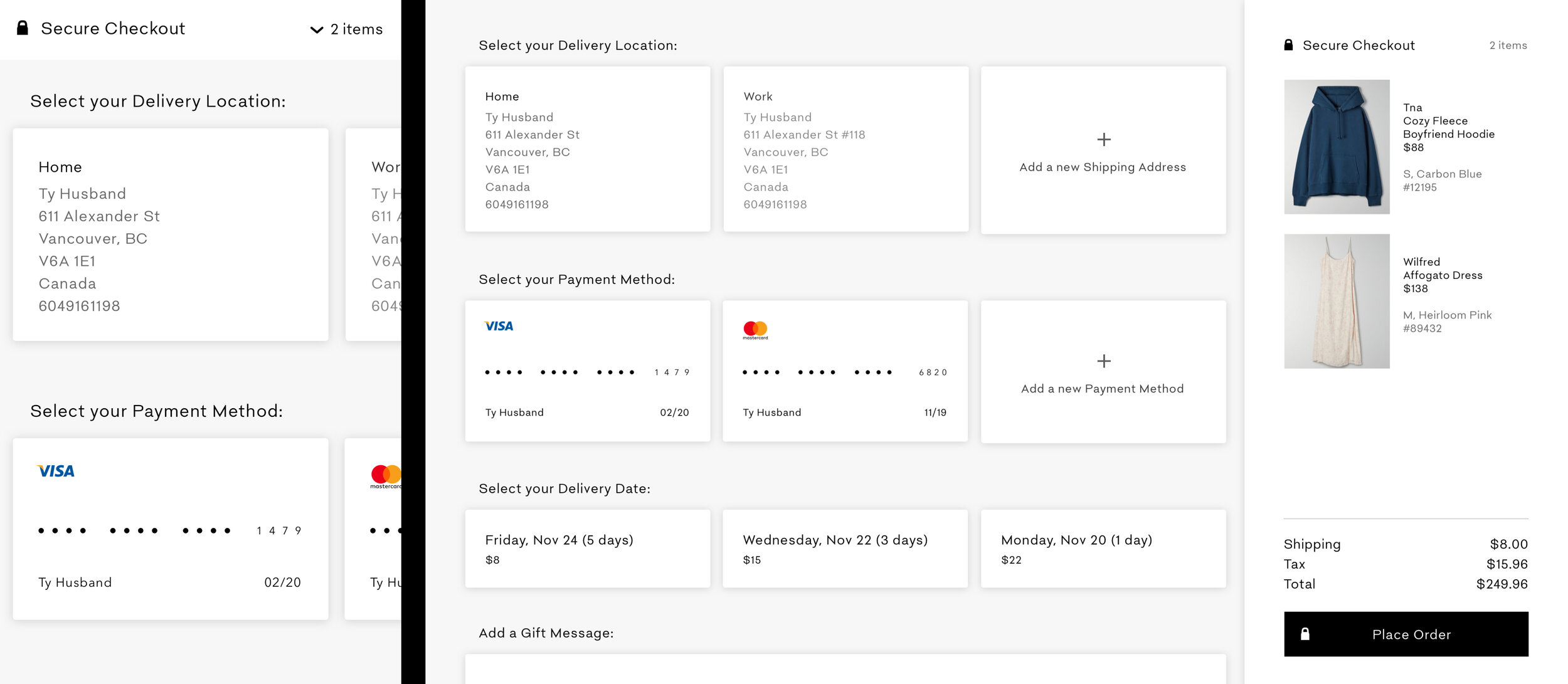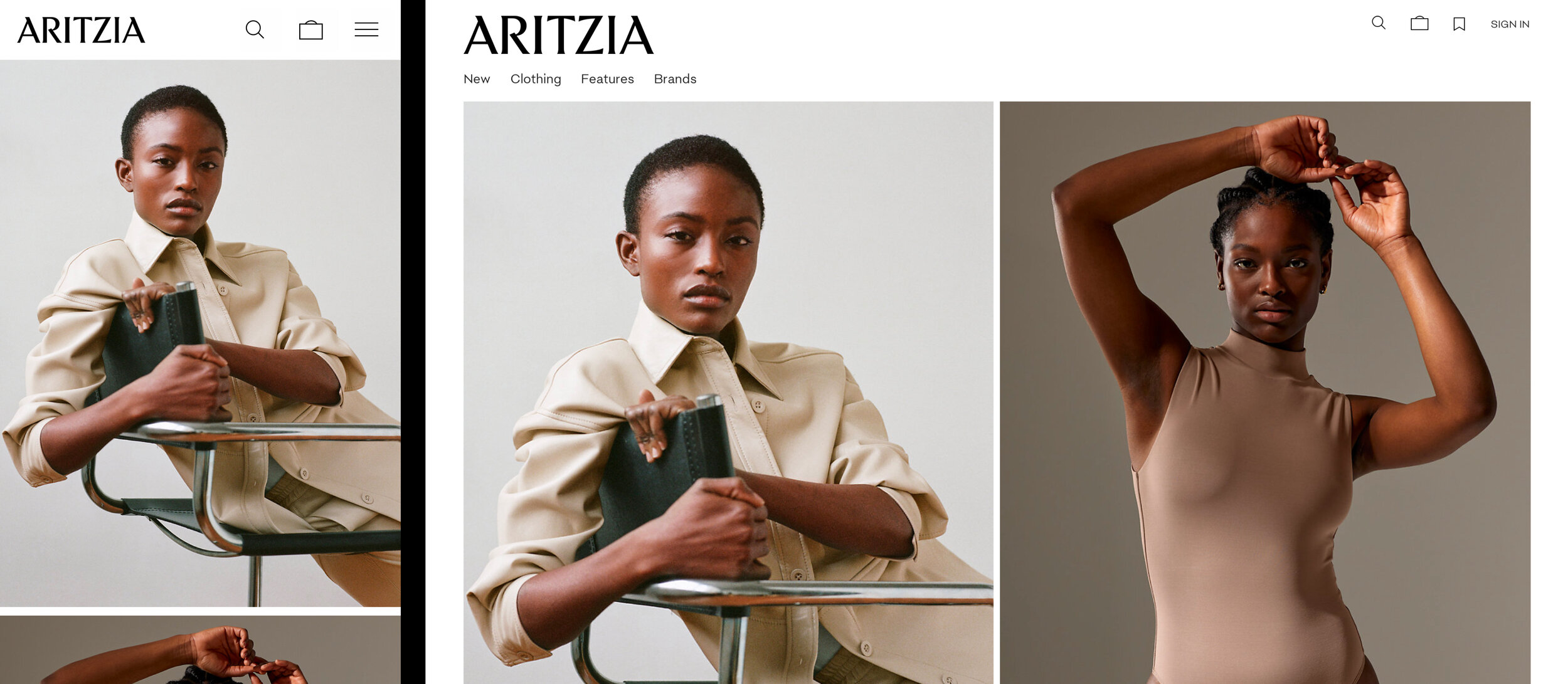
Redesigning Navigation
Since the inception of Aritzia.com, nobody had touched the main menu, site header, footer, or any other navigational element. In 2019, I began an ongoing project to ensure these components reflected more contemporary customer expectations, our growing product catalogue, and the spirit of the brand.
The project began with the site architecture — After numerous rounds of feedback from internal stakeholders, user research, and analytics we generated principles for how categories should be expressed and organized.
Next, I documented important navigational insights, including key user flows and technical constraints. This helped inform divergent thinking exercises, in which I generated many possible future site experiences. After more stakeholder feedback, and user testing prototypes, we aligned on a final iteration of the experience.
Finally, I helped prepare a feature roadmap and detailed interface specifications, which I then worked alongside our development, AB testing, and analytics teams to bring the experience to life on the site.
